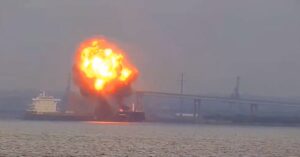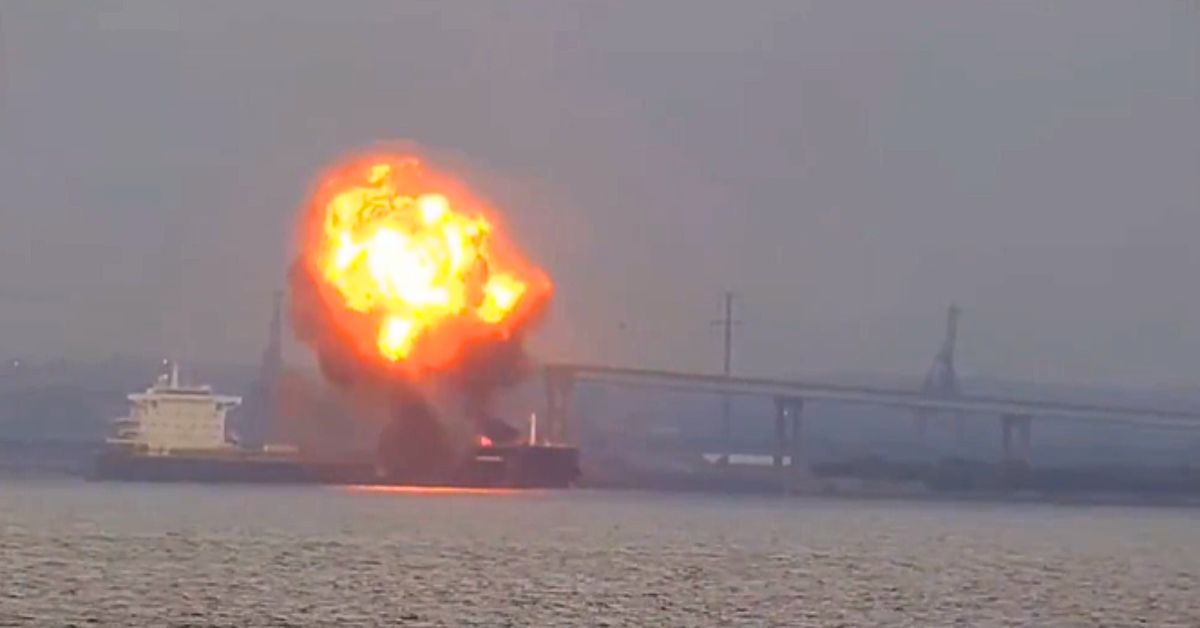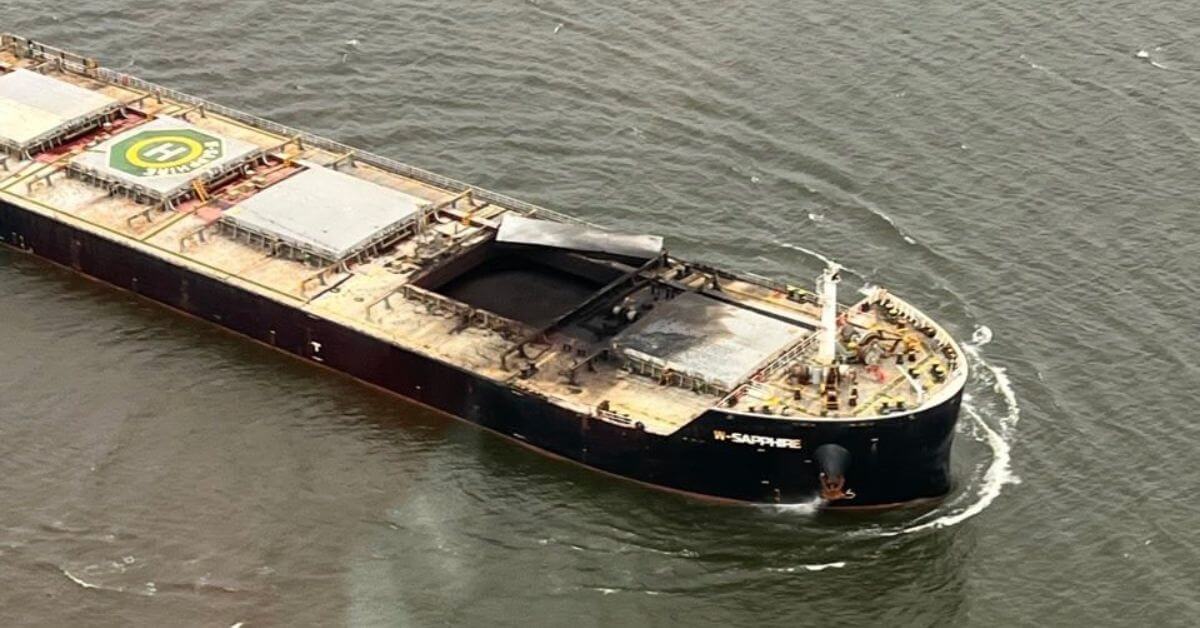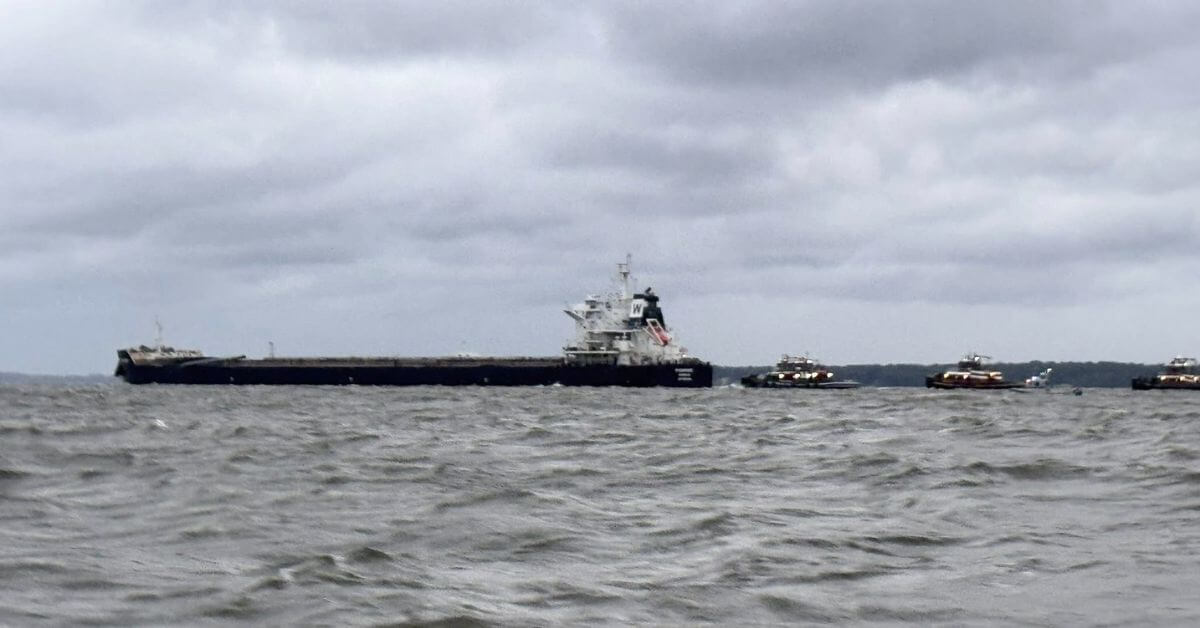
Disconnected Injection Line Caused Bulk Carrier Fire On Lake Erie, Says TSB
August 30, 2025
One Of World’s Most Advanced Research Vessels Halts Uruguay Expedition After Malfunction
August 30, 2025

The main shipping channel to the Port of Baltimore has reopened after being shut down twice in August following a powerful explosion on a coal carrier close to the site of last year’s Francis Scott Key Bridge collapse.
The incident happened on the evening of August 18 when the 751-foot (229-meter) bulk carrier W-Sapphire departed Baltimore loaded with coal and bound for East Africa. The vessel was expected to reach Mauritius in about a month, according to marine tracking data.
Shortly after leaving the coal terminal, the ship suffered a sudden explosion. Video taken from the shore showed a massive fireball rising several hundred feet into the air, followed by a thick black plume of smoke spreading over the Patapsco River.
BREAKING: Cargo ship explodes in Baltimore Harbor in Chesapeake Bay, Maryland. pic.twitter.com/HuAErSIisR
— AZ Intel (@AZ_Intel_) August 18, 2025
There were 23 crew members and two pilots on board at the time. The U.S. Coast Guard confirmed that no one was injured. The Baltimore Fire Department reported that the blast caused a fire below deck, which was contained. Maryland’s emergency management agency said there was no damage to property outside the ship.
The force of the blast tore through the ship’s number two hold, ripping off its hatch cover. One leaf stayed on deck while the other, weighing about 30 tons, was blown overboard into the Fort McHenry Federal Channel. Initial radio calls from the vessel suggested there may have been water intake into the hold, though the main force of the explosion went upward.
The U.S. Coast Guard immediately set up a 2,000-yard (1,829-meter) safety zone around the area where the hatch was believed to have fallen. The Fort McHenry Channel, the port’s main shipping route to the Atlantic Ocean, was closed for several hours on August 19 while sonar surveys were carried out.

Vessel tracking showed the closure cut off several ships at Baltimore terminals, including bulk carriers, car carriers, and container vessels. At least two bulkers, three car carriers, and two container ships were waiting outside the shuttered area with Baltimore listed as their destination.
A smaller safety zone was later set up around the anchored W-Sapphire. Officials explained that this restricted area was not wide enough to stop other vessels from passing.
The hatch cover remained underwater until August 28, when dive and salvage teams retrieved it from the northern end of Chesapeake Bay. The operation forced another closure of the Fort McHenry Channel between 7:30 a.m. and 3:00 p.m. that day, with a 500-yard safety zone placed around the recovery site.

By mid-afternoon, the Coast Guard confirmed the hatch had been lifted from the riverbed. The U.S. Army Corps of Engineers assisted the operation using its survey vessel Buck, which had already mapped the area on August 19 to guide recovery work.
The W-Sapphire, built in 2012 and classed by Lloyd’s Register, sails under a Liberian flag and is operated by Greece-based W Marine. The vessel, a 81,700-dwt kamsarmax bulker, remains anchored near Sandy Point State Park and north of the Chesapeake Bay Bridge while inspections continue.
Investigators are examining the cause of the blast. Coal dust explosions happen when fine particles mix with oxygen and a heat source, often as a secondary effect. Authorities are looking at causes such as spontaneous combustion or an external heat source that may have ignited the dust.
References: The Associated Press, The Baltimore Sun
Source: Maritime Shipping News


